- Home
- Reviews
- Editorials
-
Web
- YouTube
- Google+
- About
Friday, 6 April 2012
HTC ONE X REVIEW
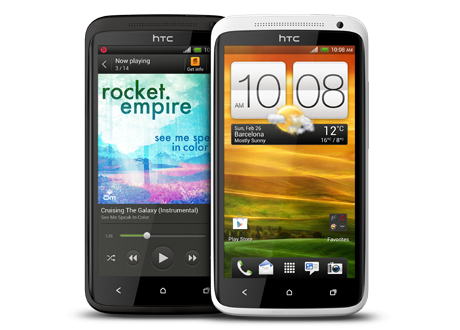
So today, we’re looking at the global version of the One X, arguably the most important of these first three One devices. It’s certainly the most powerful, thanks to a 1.5GHz quad-core Nvidia Tegra 3 processor, a 4.7-inch 720p display, an 8-megapixel camera with some aggressive specs including 1080p video capture, 32GB of storage and 1GB of RAM. Of course, we’ve learnt countless times that all the specs in the world don’t make for a great device — it’s a marriage of hardware, software, and ecosystem. Let’s find out whether HTC’s “reboot” passes the test.
VIDEO REVIEW

HARDWARE
I can you tell you straight away that the One X is a beautifully made device. Before the screen is even turned on, the device could win phone of the year on looks alone. I've always been a bit of hater of big screens and although the One X is on the larger side at 4.7 inches, the curvature and smooth lines make it feel smaller than it is. I know it must be a hard job to make a phone look reasonable even though it can have a huge display but HTC have shown that with a bit of hard work, it can be done with amazing results. There's nothing awkward or uncomfortable about the One X and its leaps and bounds ahead of looks and design compared to HTC's last few efforts like the Desire and Sensation range. It's simply a great looking phone from any angle.
The One X adopts a curved profile reminiscent of the Galaxy Nexus — hold it sideways and you'll notice how the top and bottom edges very gently curve up. The majority of the case is a seamless matte plastic that feels glossier (that is, more slippery) than it looks, but not enough to raise any particular concern about dropping it. It has a similar appearance to the material that Nokia has started using on its higher-end devices, though HTC's has a little less texture to it. There is a black and white version of the phone; we had the black and it looks absolutely fantastic although due to the material I would be a little worried about staining with the white one. The case has a tendency to show and retain dirt very easily. With the black version, it's not much of a problem but I could easily see a white version being stained considerably. This may be why most white phones are glossy, even when other colours of the same device are matte (the aforementioned Nokia's, for instance) — a glossy surface is less likely to pick up grime, and that becomes more important when the colour doesn't hide it.

The earpiece and speaker grills are literally tiny holes, laser drilled smoothly into the casing which you cant even feel if you run your fingers over them - minimalism at its best. Gone are the days of the Sensation with its ugly metal earpiece grill. The camera, which is surrounded by an attractive matte silver ring, is raised just enough so that the loudspeaker picks up a "megaphone effect" when you've got the phone sitting on a table; furthermore, the design prevents the camera lens (which is flush with the top of the ring) from getting scratched this way.
On the left hand side, you have just the micro USB charging port embedded into the casing. On the right, you have glossy volume rockers which fit right into the glossy band around the phone. At the top, you have the power/stand by key on the right and headphone jack alongside the noise cancelling mic on the left. On the right shoulder of the device, you have the micro SIM tray which pops out just like the iPhone. The only intrusion of the casing at the bottom of the phone is the main microphone, keeping in line with the minimalist effect HTC are going for.

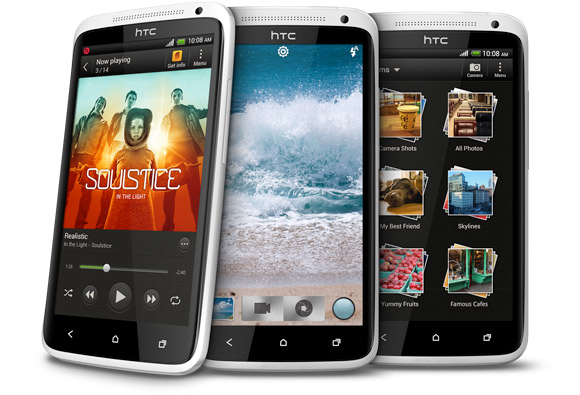
The One X' display is without a doubt, the best display I have ever seen on a mobile phone.
Seriously, I've tried and tried and have yet to find fault with it. It's got a near perfect 180 degree viewing angle and amazing colour reproduction. The display of colours is the best on the mobile market with vivid accuracy, really bright whites and pure blacks. Its a 720p screen which brings it on par with the iPhone's Retina display where the individual pixels become invisible to the naked eye. It also lacks the infamous pentile subpixel arrangement commonly employed on high-resolution AMOLEDs like that found on the One S, and it runs circles around the Galaxy Nexus's 4.65-inch Super AMOLED for overall quality. The biggest reason why manufacturers choose AMOLED over LCD is because AMOLED screens are thinner and self illuminating meaning less power consumption and thinner devices. Despite this, the One X is still beautifully thin with an LCD display.
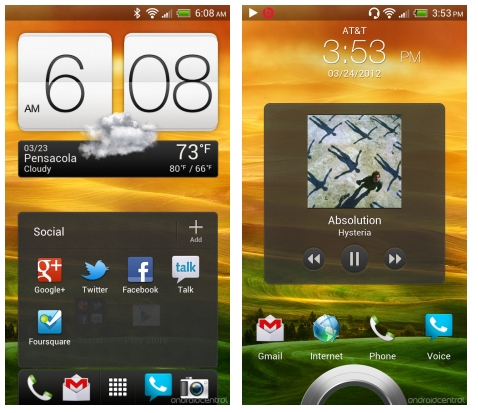
As I've said, the One line represents something of a philosophical rebirth for HTC, and that's as true in the software — Sense 4.0 — as it is in the hardware and the branding. Yes the phone does sport Android 4.0 but it still implements its Sense skin over it. HTC made it clear that they wanted to tone down Sense as on previous phones, Sense kind of dominated the Android OS and it had to take a back seat to HTC's skin. The company were aiming to integrate Sense more tightly with the platform and to make it less of a bright, over designed, in-your-face experience than it's been in the past. Now this has and hasn't happened. Some areas of the software are much better. Take the notification tray for example. On previous phones, when you pulled down the tray, it showed you recently used apps with notifications below which was just stupid. Now, the recently used apps are gone giving you more room for actual notifications. Also, as Android 4.0 has an integrated task switcher, the recently used apps function is redundant.
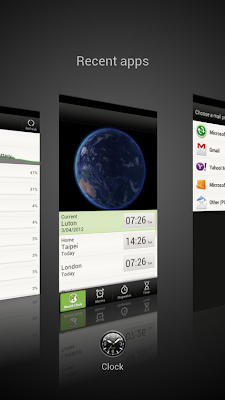
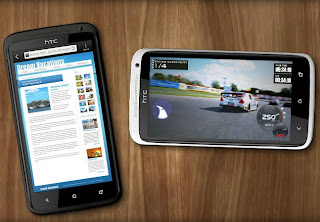


Along with audio, the camera talents have also been a consistent selling point of the One X according to HTC.
On the software side, I believe that the One X's camera functionality — ImageSense, as HTC calls it — is the best and easiest use of any Android device on the market. In some ways, it runs circles around the benchmark-setting iPhone 4S as well. I'm loving the fact that HTC has integrated photo and video modes into a single viewfinder — there's no switch you need to toggle, then wait several seconds while the camera changes modes. You're simply always in both modes at the same time: if you want to take a still shot, you press the shutter button, and if you want to start recording a video, you press the video button. Both operations happen more or less instantaneously, and HTC's managed to quash almost all shutter lag in the still mode — that was a big deal with the Galaxy Nexus, so it's good to see the One X follows suit. And unlike the Nexus, the One X's autofocus is consistently fast and accurate. The One X allows you to take still images at the same time as recording video and the images never lack any quality when taken during this process.


First of all, I think HTC's Sense skin can do a lot better. There are instances where you'll find the interface adhering to Sense more than Android. On the bright side, compared to older versions of Sense, HTC have improved slightly and let a bit more of Android shine through. Despite the quality of the camera, I can honestly say that the HTC One x is one of the best smartphones I have ever used and so close to being the perfect Android phone. HTC have done wonders with their new One series of handsets and I'm glad to see them back on the right track. If you are after an all round great Android phone that provides speed, reliability and design, look no further. The One X is almost perfect in everything it does. The Sense interface doesn't detract from the experience and that display is just gorgeous. This is probably the best smartphone available at the moment and a sure fire nomination for phone of the year. The only lacking feature would probably be the camera and if that's important to you, I would probably wait and see what Samsung do with the Galaxy S3. I cannot stress enough though, that despite the camera, the One X is a fantastic handset.
Email This BlogThis! Share to Twitter Share to Facebook
Copyright © 2012 Technically Funny | All Rights Reserved







1 comments:
nice review...
Post a Comment